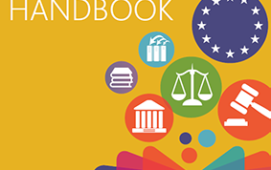Legal, translation and reporting specialists have voiced fears over the burden for fund promoters under UCITS IV.
Among the important legal, workflow and production challenges in meeting the KIID (Key Investor Information Documents) requirements to be implemented in July, fund managers that wish to ‘passport’ UCITS funds into other EU states will have to translate KIIDs into the local language of each country where the fund is sold.
Brooke Christian of leading translation provider TransPerfect said: “The translation service will be under enormous pressure so efficiency and convenience in this area will be critical. Currently, the original text has to be sent to translators and on return the results delivered to the end document. Any changes to the original text then has to be resent, re-returned, re-delivered to the end document and so on. This is necessarily slow and with so many moving parts, it will inevitably be error-prone and therefore risky.”
Estimating and planning for document volumes will therefore be crucial to product promoters. For example, a promoter or distributor wanting to market a UCITS in its domestic market and five other EU markets with different local languages must plan for up to 6 languages x potentially 4 updates per year x the number of share classes of the fund – just to present one fund in all the EU countries for which it has a ‘passport’. If the funds each had three share classes, a promoter distributing 20 funds could be looking at 1440 KIIDs per year (6 x 4 x 3 x 20).
The issue is more than just one of volumes. Overlooking the translation of other marketing documents will also carry liability risks.
“It is all too easy for firms to focus only on the translation requirements of the KIID whilst neglecting to make an informed decision about whether it might be preferable to translate the prospectus and other documents into the investor’s language. There is a clear opportunity here for distributors and promoters to avoid any possible pitfalls by taking a more pragmatic perspective,” said Harald Glander, partner at UK law firm Simmons & Simmons.
Aside from the translation issues, from July the Synthetic Risk Reward Indicator (SRRI) will be the sole indicator of investment risk to the investor. It is based on volatility that in turn is based on historical data. “Bearing in mind the words of the wealth warning that ‘past performance is no guarantee of future results’, the regulators and industry generally should be calling for indicators of current and likely future conditions of the UCITS. The investor would surely be far better served by this approach,” said Abbey Shasore, CEO of reporting specialist Factbook.
Subscribe to our newsletter





